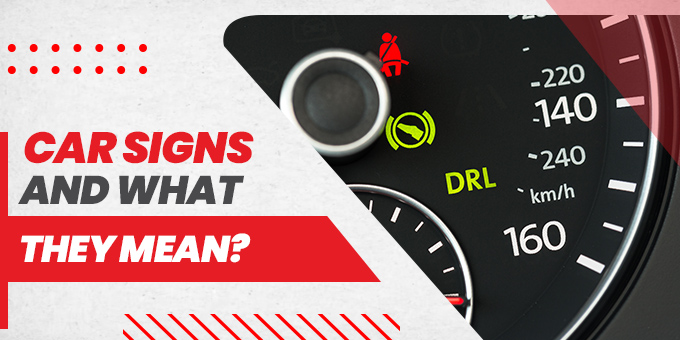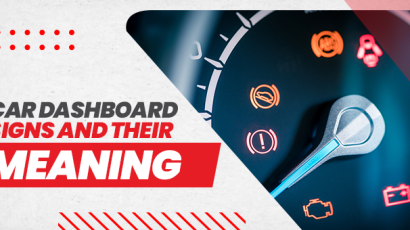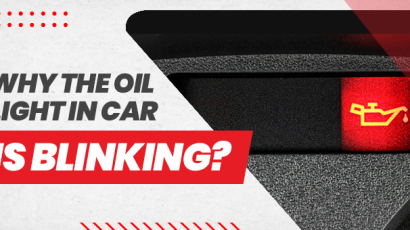
In today’s fast-paced world, where cars have become an integral part of our daily lives, it is crucial to understand the meaning behind different car signs. This understanding is essential for every driver. Whether you’re a seasoned motorist or a novice on the roads, decoding car signs and understanding their meanings can ensure safe and responsible driving practices. Therefore, let’s learn about car signs.
The Importance of Car Signs
Car signs are not mere symbols on the roads; they serve as critical communication tools between drivers, pedestrians, and road authorities. Moreover, these signs convey essential information, warnings, and instructions that help maintain order, prevent accidents, and promote efficient traffic flow.
By familiarizing yourself with car signs and their meanings, you become a more informed driver. Furthermore, you also become capable of anticipating potential hazards and responding appropriately in various traffic situations.
Road Signs
Regulatory Signs
Regulatory signs are crucial for establishing and enforcing traffic laws. Moreover, these signs often feature red, white, or black lettering on a white background. Moreover, they are designed to inform drivers about regulations that must be followed. Some common regulatory signs include:
Stop Sign: Displayed in an octagonal shape and featuring white letters spelling “stop,” this sign commands drivers to come to a complete stop at the intersection. By doing so, it ensures the safety of everyone on the road.
Yield Sign: Triangular in shape, the yield sign effectively alerts drivers to yield the right-of-way to other vehicles or pedestrians at a specific junction or merging point.
Speed Limit Sign: A common sight on nearly every road, speed limit signs play a crucial role by indicating the maximum speed at which drivers can travel. Furthermore, obeying these speed limits significantly helps prevent accidents and maintain the smooth flow of traffic.
No Entry Sign: This circular sign with a red border and a white background indicates that drivers cannot go in a specific direction or enter a certain area.
One-Way Sign: These signs indicate that the road ahead is for one-way traffic only, ensuring orderly movement and reducing the risk of head-on collisions.
Road Warning Signs
These warning signs help drivers become alert to potential road hazards that require extra caution. These signs are typically yellow or fluorescent in color and feature black symbols or text. Some common road warning signs include:
Curve Ahead Sign: This sign warns drivers of an upcoming curve in the road, enabling them to reduce their speed and negotiate the turn safely.
Pedestrian Crossing Sign: Shaped like a person walking, this sign indicates areas where pedestrians frequently cross the road, reminding drivers to be vigilant and yield the right-of-way.
Slippery Road Sign: This sign warns drivers of road sections that may become slippery due to rain, ice, or other factors.
School Zone Sign: Recognizable by its image of a child walking, this sign alerts drivers that they are entering a designated school zone. It serves as a reminder to drive cautiously and look out for children that may be crossing the road.
Informational Signs
Informational signs provide drivers with non-regulatory information about nearby facilities, services, or attractions. They have a blue or green background with text or symbols in white. Some generally used informational signs include:
Hospital Sign: These signs guide drivers to the nearest medical facility, ensuring that emergency services can be accessed quickly when needed.
Gas Station Sign: Displaying the word “GAS” or a recognizable fuel symbol, these signs indicate the presence of nearby gas stations, helping drivers plan their refueling stops.
Tourist Attraction Sign: Found in areas with notable landmarks or tourist spots, these signs provide directions to places of interest, making it easier for visitors to navigate unfamiliar locations.
Car Warning Signs
Check Engine Light
The check engine light, often shaped like an engine or displayed as “CHECK ENGINE” on the dashboard, signifies a problem with the engine or its components. Furthermore, this warning light can indicate various issues, ranging from minor faults to more significant engine problems.
Therefore, it is crucial to get your vehicle checked by a qualified mechanic who can diagnose and resolve the specific cause of the check engine light.
Battery Warning Light
The battery warning light, usually depicted as a battery symbol or “BATT” on the dashboard, indicates an issue with the vehicle’s charging system. It can suggest a faulty battery, a failing alternator, or loose connections. If this warning light illuminates, you should get it checked right away.
Oil Pressure Warning Light
The oil pressure warning light, often displayed as an oil can or “OIL” on the dashboard, alerts drivers to low oil pressure in the engine. Low oil pressure can cause engine damage if you do not address it. When this warning light activates, you must check the oil level and consult a professional if the issue persists.
Brake System Warning Light
The brake system warning light, typically represented as an exclamation mark within a circle or “BRAKE” on the dashboard, serves as an indicator of a problem with the vehicle’s braking system. Basically, it can suggest low brake fluid levels, worn brake pads, or a malfunction in the brake system. If this warning light illuminates, it is important to visit a certified technician and have it checked.
Tire Pressure Monitoring System (TPMS) Warning Light
The TPMS warning light, often appearing as an exclamation mark within a horseshoe, alerts drivers to low tire pressure. In addition, it also signifies other tire-related issues. Therefore, inflation in the tires is important for driving safely. When this car warning sign lights, it is important to check it.
ABS Warning Light
The ABS warning light indicates a problem with the anti-lock braking system of the vehicle. Moreover, it helps prevent wheel lock-up during sudden braking, enhancing control and stability. If the ABS warning light illuminates, it is advisable to inspect the system to ensure optimal braking performance.
Airbag Warning Light
The airbag warning light displayed on the dashboard signifies an issue with the vehicle’s airbag system. In addition, it plays a crucial role in occupant protection during accidents. Therefore, you should promptly address any malfunction. If the airbag warning light remains illuminated, it is necessary to seek professional diagnosis and repair.
Temperature Warning Light
The temperature warning light, typically represented as a thermometer or “TEMP” on the dashboard, alerts drivers to an overheating engine. Basically, a coolant leak, a malfunctioning thermostat, or a faulty radiator can cause overheating. If this warning light activates, pulling over, allowing the engine to cool down, and seeking professional assistance is essential.
Understanding Symbols and Colors
Car signs use symbols and colors to deliver information effectively. Consequently, understanding these visual cues is essential for interpreting the meaning behind different signs. The following are the most used symbols and colors:
Symbols
Arrows: Arrows are frequently used in signs to indicate directions, turns, or merges.
Circles: Circular signs often indicate mandatory actions, such as stopping or yielding.
Triangles: Triangular signs are primarily warning signs that alert about on-road hazards.
Squares or Rectangles: Signs with square or rectangular shapes typically convey regulatory information or provide guidance.
Colors
Red: Red mostly signifies prohibition signs, signaling drivers to take immediate action or exercise caution.
Yellow: Yellow is used for warning signs, indicating potential hazards that require drivers to be cautious.
Blue: Blue signs typically provide informational guidance, directing drivers to services, facilities, or tourist attractions.
Green: Green signs often indicate directional guidance or provide information about nearby destinations.
Conclusion
In summary, by understanding the meaning behind car warning signs, drivers can stay proactive in vehicle maintenance. Overall, the warning signs discussed above are among the most common. However, you can read the vehicle manual as well for a comprehensive list of warning signs.










